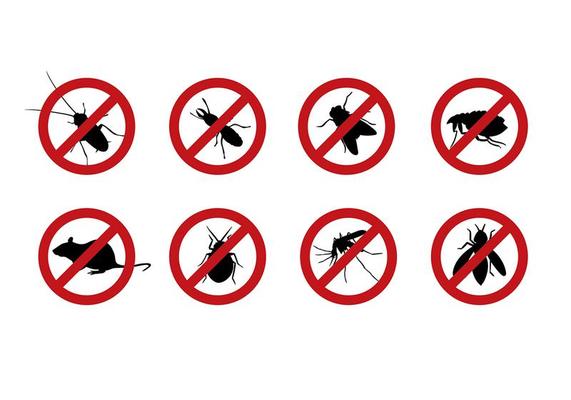Exploring Problem and Therapy Techniques on the planet of Bug Control
The landscape of bug control incorporates a myriad of challenges, particularly as invasions of usual house pests continue to progress. By integrating preventative actions with sophisticated administration techniques, such as Integrated Pest Management (IPM), property owners can much better secure their atmospheres.

Usual House Pests
When it comes to managing our living rooms, recognizing common household insects is vital. These bugs not just interrupt our convenience yet can additionally posture wellness threats and damages property. The most widespread house parasites consist of ants, roaches, rats, termites, and bed insects.
Ants, commonly seen foraging in kitchen areas, can pollute food and establish large colonies. Roaches, recognized for their durability, can activate allergies and spread pathogens. Rats, consisting of computer mice and rats, can trigger structural damages and lug illness like hantavirus and salmonella. Termites, typically referred to as "quiet destroyers," can compromise the integrity of wood frameworks, causing costly repairs. Bed pests, although not illness providers, can cause substantial discomfort through their attacks and cause psychological distress.
Acknowledging the signs of these parasites, such as droppings, nests, or bite marks, is essential for very early intervention (Pest Control Lockhart). Correct sanitation techniques, sealing access points, and keeping a clutter-free environment work preventative steps. By recognizing these typical household insects and understanding their habits, homeowners can take positive steps to alleviate problems, making sure a healthier living atmosphere
Recognizing Insect Infestations
Bug problems can rise quickly, turning a minor inconvenience into a considerable issue if not attended to without delay. Usual variables adding to problems consist of inadequate hygiene, architectural susceptabilities, and seasonal adjustments that drive parasites inside.
Recognizing the kind of parasite is essential, as different species show diverse actions and reproductive prices. As an example, rodents may establish nests in hidden locations while pests like roaches prosper in moist atmospheres. Early discovery commonly depends upon acknowledging signs such as droppings, gnaw marks, or uncommon audios, which can suggest a problem prior to it comes to be serious.
Warm, moist climates can assist in the quick growth of bug populaces, while modifications in landscape design or construction can unintentionally develop conducive atmospheres. An enlightened approach to comprehending these characteristics lays the foundation for effective bug monitoring strategies in the future.
Treatment Approaches and Strategies
Effective treatment techniques and methods are crucial for reducing bug problems and recovering a safe environment. A diverse technique is often best, integrating chemical, biological, and mechanical approaches customized to the details parasite and the severity of the problem.
Chemical therapies consist of the use of insecticides and herbicides, which can efficiently get rid of bugs. Nonetheless, correct application and adherence to safety and security standards are crucial to reduce risks to more humans and non-target organisms. Integrated Parasite Monitoring (IPM) urges the sensible use chemicals as a last option, depending instead on monitoring and limit degrees to figure out intervention needs.
Organic control methods entail introducing natural killers or parasites to lower bug populations. This technique is progressively preferred, especially in agricultural setups, as it promotes ecological sustainability.
Mechanical methods, such as catches and barriers, give instant remedy for bugs without introducing chemicals. Choices include sticky traps for pests or physical barriers for rats.
Ultimately, the selection of treatment technique should take into consideration click here for more the specific bug, the environment, and possible impacts on human wellness and communities. A well balanced combination of these methods can effectively handle problems while promoting long-lasting parasite control services.
Safety Nets for House
Proactively addressing insect problems prior to they escalate is important for preserving a healthy and balanced home setting (Pest Control Lockhart). Applying effective precautionary procedures can significantly decrease the probability of problems, inevitably guarding both your residential property and health

Correct landscape design additionally plays a crucial duty in avoidance. Maintaining bushes and trees cut away from your home lowers the opportunities of parasites discovering their method inside your home. Ensure that drainage systems are functioning successfully to prevent standing water, which can attract in mosquitoes and other insects.
Lastly, regular inspections are a good idea. Regularly looking for indications of bug activity enables for early intervention. By taking on these precautionary steps, homeowners can develop an atmosphere that is less friendly to insects, thereby boosting their general top quality of life and minimizing the need for considerable insect control interventions.
Industrial Pest Control Methods
An extensive strategy to industrial parasite control is vital for businesses intending to maintain a risk-free and sanitary atmosphere. Effective methods entail a combination of normal inspections, worker training, and the execution of Integrated Insect Monitoring (IPM) practices.
Routine examinations allow very early discovery of pest activity, permitting timely intervention. Services need to develop a routine timetable for these analyses, focusing on high-risk locations such as cooking areas, storage rooms, and waste disposal websites. Staff member training is equally important; team needs to be educated on the signs of bug problems and the relevance of reporting them instantly.
Carrying out IPM methods aids minimize pest problems sustainably. This includes habitat adjustment, such as securing entrance factors and minimizing mess, along with using all-natural deterrents prior site to considering chemical therapies.

In addition, teaming up with a licensed pest control service provider guarantees access to professional understanding and sophisticated treatment options. This partnership can lead to tailored parasite control intends customized to the certain requirements of the service, lessening dangers and enhancing overall efficiency. Inevitably, a positive and educated method fosters a pest-free setting, securing both public health and wellness and company credibility.
Conclusion
In conclusion, efficient insect control demands an extensive understanding of common house pests and their actions, combined with targeted therapy techniques. Applying preventive procedures alongside treatment methods such as Integrated Pest Administration and organic control boosts the ability to alleviate problems.